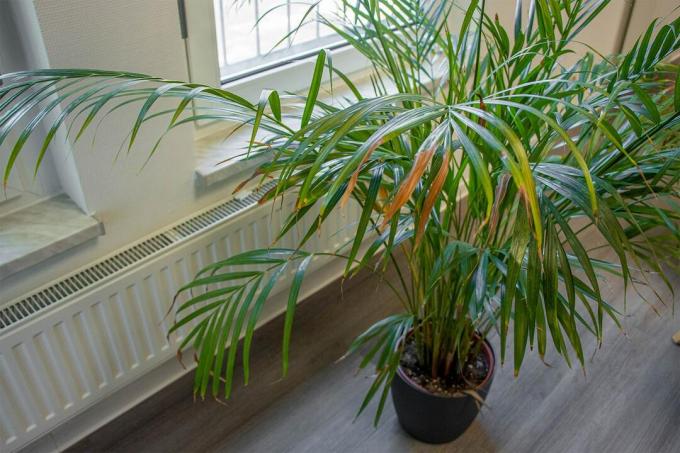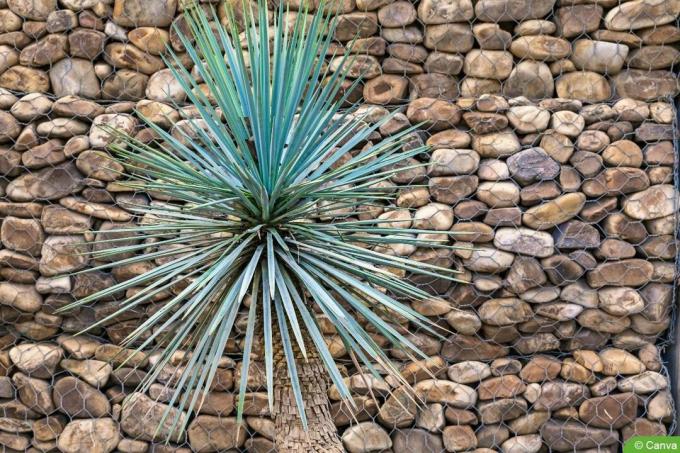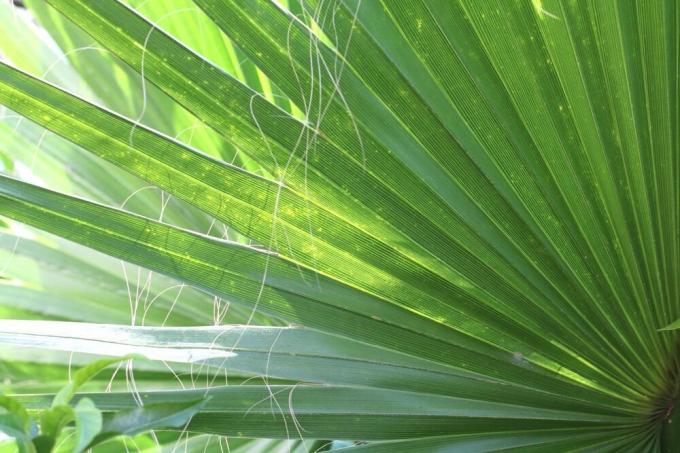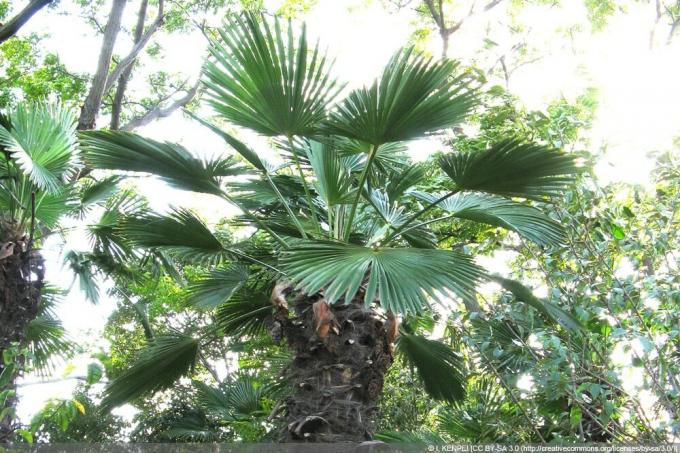

Table of contents
- The basic question of location
- location in the summer months
- location during the winter months
- Yucca elephantipes throughout the year
Yuccas are incredibly popular in German homes. Of the more than 50 species that exist worldwide, the Yucca elephantipes can be found here in particular. It is, so to speak, the epitome of what is generally understood by a yucca palm. Your big advantage: It is very robust and easy to care for. It therefore does not require a lot of attention or great gardening experience. However, their needs change somewhat throughout the year. If you want to do something good for your plant, you orientate yourself on these needs and also adapt the respective location.
The basic question of location
The classic yucca palm is a houseplant. While it can be outdoors during the summer months under certain conditions, it cannot be cultivated there. It almost goes without saying that certain location factors must also be met in the apartment so that the plant feels comfortable and thrives. The following applies: the more ideal the location, the lower the maintenance effort required. So what does the perfect yucca location look like? Well, he should be sunny, warm and protected from drafts. The location can and should change with the changing of the seasons. Basically, three phases can be distinguished:
- The summer months
- The winter phase
- The rest of the year
The yucca palm spends most of the year in a sunny location in the apartment, without standing in the blazing sun. Fresh air through regular ventilation is important, but it should not draught. Basically, the plant likes it very warm because of its origin from the semi-desert areas in South America. If a location meets these conditions and the yucca is then regularly watered and fertilized, it will feel comfortable there and thrive magnificently.
location in the summer months
In summer, the yucca can and should go outside. It doesn't matter whether you put them on the balcony, the terrace or directly in the garden. The fresh air and natural warmth promote the growth of the plant and ensure more lushness. A few points should, of course, be taken into account. Again, it has to be warm. As a rule, you can only use the months of June, July and August in our latitudes to treat Yucca elephantipes to a trip into the countryside.
An average temperature of 20 degrees Celsius should definitely be reached. If the summer is rather wet and cold, the plant has to stay indoors. It is important that it is also protected from drafts outside and is protected from moisture. Although it is possible to place the yucca directly in the blazing sun, it must first be placed Gradually get used to the stronger sunlight to avoid "burning" of the leaves avoid. The classic yucca palma should definitely remain in its planter. In addition, it must be watered regularly and fertilized with liquid fertilizer every two weeks.
Tip:
There are also hardy yucca plants that remain outdoors all year round and can also be planted in the ground there. These include, for example: Yucca filamentosa, Yucca glauca, Yucca baccata or Yucca gloriosa.
location during the winter months
During the winter months, the Yucca elephantipes takes a break. The heated living room is therefore anything but a good location for them. She now prefers temperatures between five and ten degrees Celsius. It is logical that this absolutely requires an unheated room. At the same time, however, it must also offer enough sunlight. A regular supply of fresh air is also essential. The plant also needs to be watered regularly.
However, she now has a significantly lower fluid requirement. You should therefore be careful not to give her too much water. Otherwise waterlogging forms and the roots in particular can begin to rot. Fertilizers are completely dispensed with. In this phase, the plant does not need any nutrients. The yucca palm usually overwinters from November to March - depending on the actual temperatures.

Tip:
The plant does not have to move to its winter quarters immediately when the heating season begins. However, you should then spray them regularly with a water atomizer to counteract the dry heating air.
Under normal circumstances, from around mid-March onwards, the amount of water when watering will be increased significantly and the fertilizer application will begin again. Incidentally, the risk of diseases is particularly high during the winter. This is especially the case when the yucca is in a too warm location. Then pests such as aphids and spider mites can spread on it. It is therefore particularly important to regularly check the yucca for pest infestation during the dormant phase. Brownish discoloration of the leaves or yellowing indicate insufficient humidity or insufficient light. If this is the case, a remedy must be found urgently.
Yucca elephantipes throughout the year
Having as large, lush a plant as possible is probably the goal of most yucca palm owners. The plant actually has what it takes to grow into a truly imposing, majestic appearance. Of course, in order for this to really succeed, you have to meet their natural needs at any time of the year. And that includes a change of location. Above all, going outside often acts like a growth accelerator. At least as important, however, is the winter rest phase. If the location changes with the seasons, this is the best guarantee for an impressive yucca palm tree in the home.
 Home editorial office
Home editorial office
Learn more about palm trees

Palm leaves hanging: save yucca & co
Palm trees give the home a southern flair. However, if Yucca & Co. let their leaves droop, their sight is rather desolate. The causes of hanging palm fronds vary. A rescue attempt is always worthwhile.

Blue palm lily, Yucca rostrata: 12 tips for care & Co.
The blue yucca (Yucca rostrata) is one of the most fascinating Yucca species. Since it hardly requires any care, it is also suitable for the office. Planted in the garden, it is considered hardy when it is dry.

Washington Palm: Care From A-Z | Overwinter Washingtonia robusta
The Washington palm is a decorative plant that can grow to an impressive size. Due to the lack of winter hardiness, the plant is usually kept indoors in this country. When it comes to care, the palm makes certain demands so that healthy development can occur.

Areca palm, Dypsis lutescens: basics of care
The Areca Palm is a beautiful plant for indoor greenery. When it comes to care and location, the palm has certain requirements, if these are met, the plant will thrive. In order for the plant to grow constantly green, it needs the right lighting conditions.

Wagner's hemp palm, Trachycarpus wagnerianus: Care from A-Z
If you want exotic flair in your garden or on your terrace, you can't avoid Wagner's hemp palm. No wonder: the extremely decorative umbrella palm not only looks impressive, but is also very robust. More about this is here.

Candle palm lily, Yucca Gloriosa – Care from A-Z | Is she hardy?
A yucca is better known to most as an exotic houseplant, the candle palm lily (bot. Yucca gloriosa) is also ideal as an outdoor plant, bringing a touch of tropical flair to your garden.
